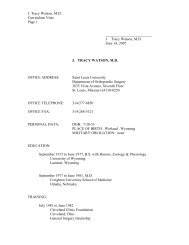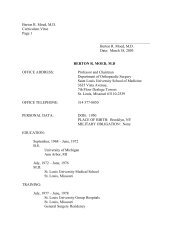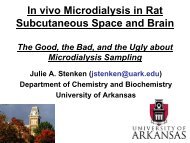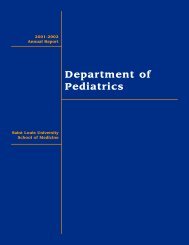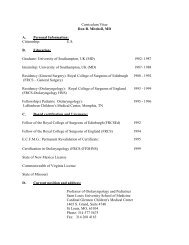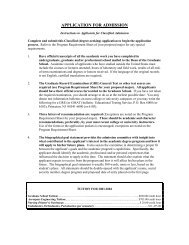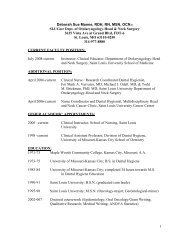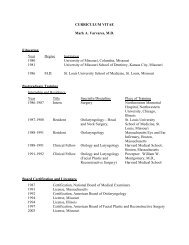Living Image 3.1
Living Image 3.1
Living Image 3.1
Create successful ePaper yourself
Turn your PDF publications into a flip-book with our unique Google optimized e-Paper software.
<strong>Living</strong> <strong>Image</strong> ® Software User’s Manual<br />
NOTE<br />
Do not place equipment that contains LEDs in the imaging chamber.<br />
Phosphorescence is a physical process similar to fluorescence, but the light emission<br />
persists for a longer period. Phosphorescent materials absorb light from an external source<br />
(for example, room lights) and then re-emit it. Some phosphorescent materials may re-emit<br />
light for many hours. If this type of material is introduced into the imaging chamber, it<br />
produces background light even after the chamber door is closed. If the light emitted from<br />
the phosphorescent material illuminates the sample from outside of the field of view during<br />
imaging, it may be extremely difficult to distinguish from the light emitted by the sample.<br />
IVIS ® Imaging Systems are designed to eliminate background interference from these<br />
types of materials. Each system is put through a rigorous quality control process to ensure<br />
that background levels are acceptably low. However, if you introduce such materials<br />
inadvertently, problems may arise.<br />
Problematic materials include plastics, paints, organic compounds, plastic tape, and plastic<br />
containers. Contaminants such as animal urine can be phosphorescent. To help maintain a<br />
clean imaging chamber, place animal subjects on black paper (for example, Artagain black<br />
paper, Strathmore cat. no. 445-109) and change the paper frequently. Cleaning the imaging<br />
chamber frequently is also helpful.<br />
!<br />
IMPORTANT<br />
ALERT! Use only Xenogen approved cleaning agents. Many cleaning compounds<br />
phosphoresce! Contact Xenogen technical support for a list of tested and approved<br />
cleaning compounds.<br />
If it is necessary to introduce suspect materials into the imaging chamber, screen the<br />
materials by imaging them. Acquire an image of the material alone using the same settings<br />
(for example, FOV and exposure time) that will be used to image the sample to determine<br />
if the material is visible in the luminescent image.<br />
Microplates (white, black, or clear plastic) can be screened this way. Screen all three types<br />
with a test image. White plates appear extremely bright by IVIS ® Imaging System<br />
standards and interfere with measurements. Black or clear plastic microplates do not<br />
phosphoresce, making them better choices.<br />
The Xenogen High Reflectance Hemisphere provides a more definitive way to determine<br />
the presence of an undesirable light source (Figure E.1). It is a small white hemisphere that<br />
is coated with a non-phosphorescent material. A long exposure image of the hemisphere<br />
should produce a luminescent image in which the hemisphere is not visible.<br />
205




